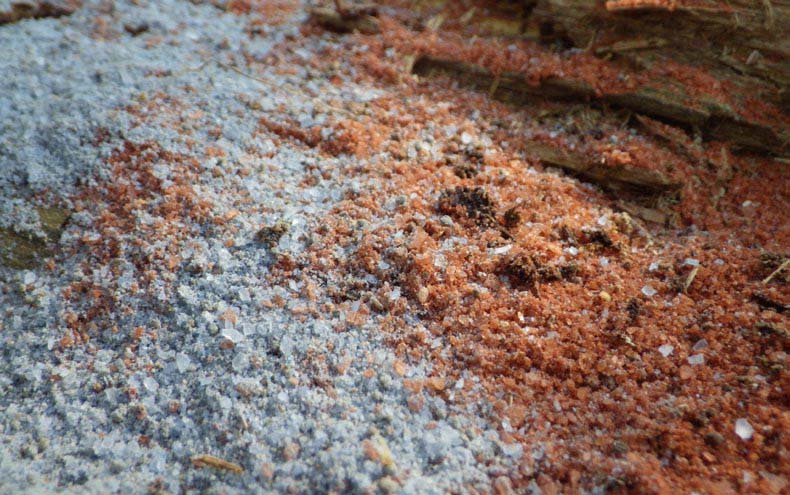You’ve probably seen deer licking the salt off parked vehicles or heard stories about them traveling miles to find natural mineral deposits. That’s because deer need minerals, especially salt, to maintain their health and support growth. Setting up a deer salt lick on your property can benefit local deer populations while giving you a perfect spot to observe these magnificent creatures.
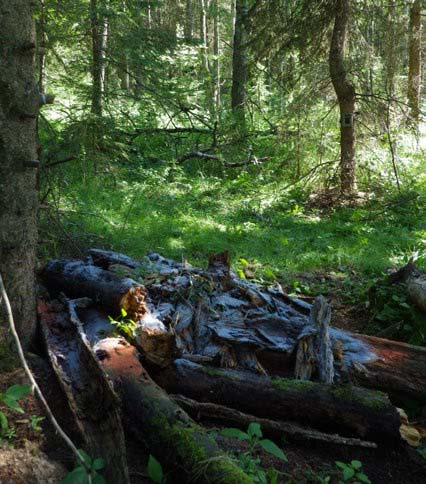
Why Do Deer Like Salt Blocks?
Deer don’t just like salt—they need it. Salt and other minerals play vital roles in a deer’s health, particularly during spring and summer months when bucks are growing antlers and does are nursing fawns.
Salt helps deer create hydrochloric acid for digestion and helps maintain bodily functions. But salt requirements vary by season. White-tailed deer need more salt during summer and spring when antlers are growing, and fawns are being born and nursed. In winter, salt helps deer adapt to harsh weather conditions.
Beyond salt, deer need calcium and phosphorus—the two most prevalent minerals in antlers. A healthy balance requires about 1.5-2.0 times as much calcium as phosphorus, which mimics the ratio in mature antlers. Trace minerals like zinc, iron, and manganese also support overall health and development.
While there’s no verified research proving that supplemental minerals improve whitetail health or antler production in free-ranging deer, there’s plenty of anecdotal evidence suggesting positive effects. Most biologists believe providing minerals helps deer express their full genetic potential.
Types of Deer Salt Licks
Not all salt licks are created equal. The best salt lick for deer depends on your goals and the local deer population’s needs. Here are the main options:
White Salt Block
Simple white salt blocks contain sodium chloride that deer crave, especially in spring and summer when water and potassium are high in green vegetation. However, these blocks provide no additional nutrients beyond salt.
White blocks may attract deer temporarily, but they do little to nourish or improve herd health. Too much salt without other balanced minerals might even create kidney and vascular problems for deer.
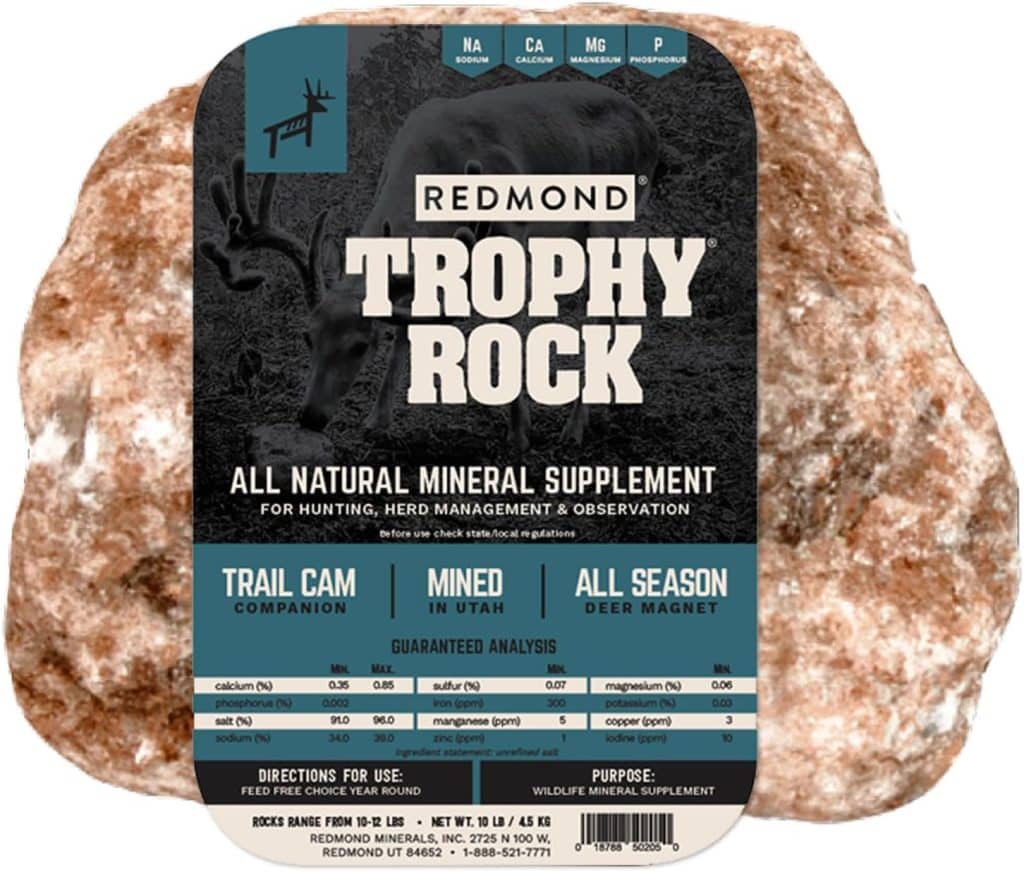
Trophy Salt Rock
Trophy salt rocks are mined from prehistoric mineral deposits and sold in their natural state. These rocks contain dozens of trace minerals formed and balanced by nature. This Trophy Rock in particular is mined in Utah.
The minerals in these rocks are naturally chelated (attached to organic nutrients), making them more bioavailable than those in manufactured sources. Trophy rocks have a potent scent that attracts deer, especially when wet, and most deer prefer them over manufactured blocks in taste tests.
The advantage of trophy rocks is they contain over 60 chelated minerals balanced by nature, provide nutrients in the same form deer find in the wild, and withstand wet weather better than most blocks.
Pink Himalayan Salt Rock
Similar to trophy rocks, Himalayan salt contains numerous trace minerals. The pink color comes from iron oxide and other mineral impurities. While not specifically designed for deer, these rocks can serve as an alternative to trophy rocks.
Mineral Block
Mineral blocks for deer contain salt and additional nutrients like calcium, phosphorus, copper, zinc, cobalt, magnesium, and manganese. Many also include vitamins A, D, and E, plus scents, flavors, and sweeteners to attract deer.
Not all mineral blocks are equal—some only contain about seven minerals rather than the full spectrum deer need. Check ingredients carefully to ensure the block meets your expectations.
Quality mineral blocks offer a complete package of nutrients in balanced ratios. They’re typically less expensive than trophy rocks and last longer, making them a cost-effective option for maintaining multiple sites.
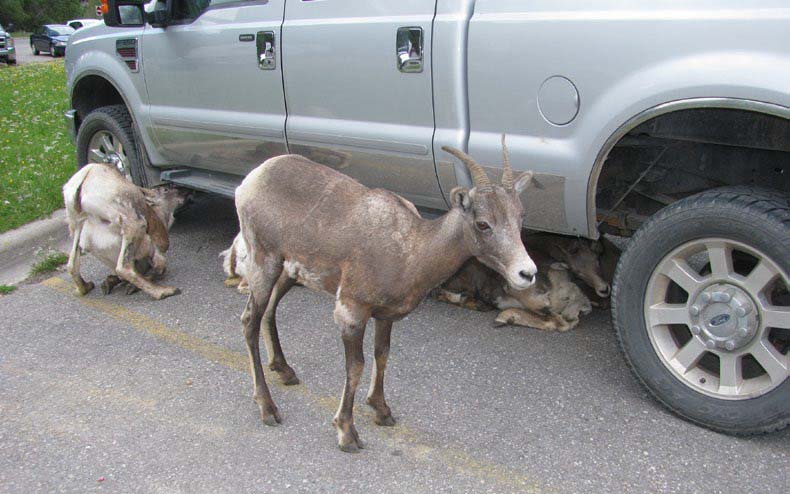
How to Make Your Own Salt Lick for Deer
Creating your own salt lick for deer is straightforward and can save you money. From my experience as an outdoorsman, here’s what works best:
- Choose a location where game trails intersect, away from aquatic vegetation but with plenty of deer traffic.
- Find an old stump or scrape the ground down a few inches to expose the soil. Make a pile of wet, rotting wood about 2-3 feet in diameter.
- Mix your own mineral blend: combine 1 part di-calcium phosphate, 2 parts trace mineral salt, and 1 part stock salt in a large bucket.
- Pour the mineral mix over the wood pile. The wet wood will absorb most of the product, helping animals digest it better.
- Set up a trail camera nearby to monitor usage.
I’ve often come back to find half the wood pile gone because the animals have chewed it right up!
For a quicker start, you can use commercially bagged preparations with essential minerals to help keep herds healthy and promote optimal antler growth. I’ve had good results with products like Rack Stacker’s Glory, which contains higher levels of phosphorus and calcium specifically formulated to help bucks grow larger antlers.
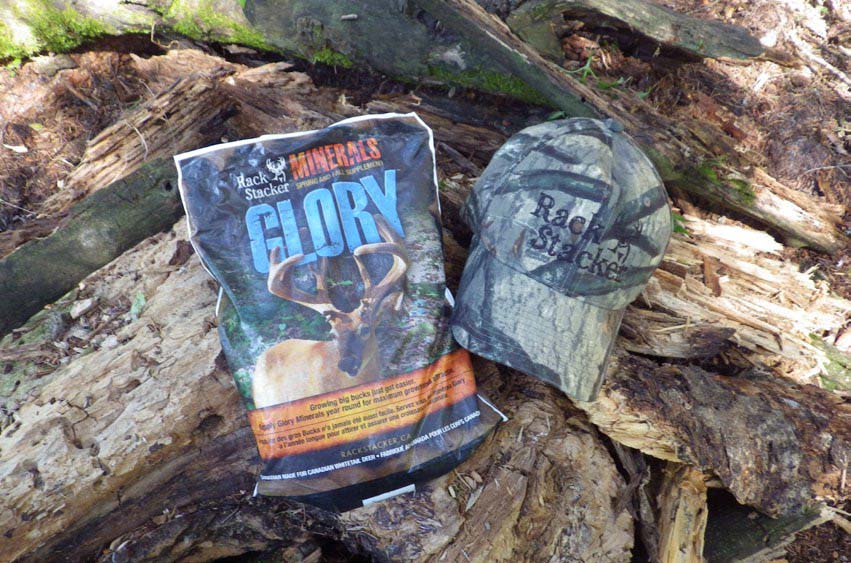
Frequently Asked Questions About Deer Salt Licks
Why do deer lick salt?
Deer seek salt because it’s essential for creating hydrochloric acid needed for digestion. They also need salt to balance the high potassium levels they consume from plants. The minerals in salt licks support bone and antler growth, muscle development, and milk production in nursing does.
What does a salt lick do for deer?
A salt block for deer provides essential minerals that may be lacking in their natural diet. These supplements can potentially improve overall health, support antler growth in bucks, and help does produce nutritious milk for fawns. Salt licks also create a perfect spot for trail cameras, allowing you to monitor local deer populations.
Where to place a salt lick for deer?
The best mineral block for deer placement is in areas with high deer traffic. Look for:
- Intersections of game trails
- Edges of food plots or farm fields
- Under evergreen trees to protect the minerals from dissolving in rain
- Areas away from water sources where ground water might leach away minerals
I always set up under an evergreen tree—it helps protect the mineral mix from dissolving with wet weather. I also recommend keeping human scent to a minimum by wearing rubber boots when setting up the lick and resisting the urge to frequently check trail cameras.
Final Thoughts
Whether you’re a hunter wanting to monitor local deer or simply a wildlife enthusiast hoping to support the health of deer in your area, setting up a trace mineral salt for deer site can be beneficial. Remember that do deer like salt blocks isn’t really the question—they need them, especially during spring and summer months.
Be sure to check local regulations, as setting up mineral licks might be considered baiting in some jurisdictions. Remember that setting up a mineral lick is considered baiting in most jurisdictions, so make sure you check and understand the regulations in your area about hunting the same area where you’ve created a mineral lick.
With proper placement and the right mineral mix, your salt lick can become a popular destination for local deer and provide you with countless opportunities to observe these magnificent animals up close. You will also be helping them grow to their full potential with their antlers.
Per our affiliate disclosure, we may earn revenue from the products available on this page. To learn more about how we test gear, click here.



